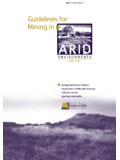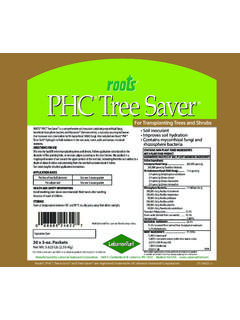Transcription of When Lightning Strikes Your Tree - Morgan Tree …
1 When Lightning Strikes Your Tree There is no pattern or norm to be expected from the effects of Lightning when it Strikes a tree. Two classes of damage can and often do occur in a wide variety of combinations. First, the mechanical and structural damage to a tree may be very slight to the point of being almost unnoticeable, or it may be extensive as though a bomb had exploded from inside the tree. A very common physical indicator of a Lightning event is the classic vertical stripping where bark, and sometimes the wood underneath, is torn from the trunk or major scaffold limbs. This stripping may skip or it may be continuous most the way up the tree.
2 As well, it may rise straight up vertically or it may spiral around the trunk like a peppermint candycane. With some events, bark can be violently blown off the tree in circumferential sections partially or completely around the trunk or limb(s). This stripping may also physically interrupt the vascular tissues that conduct fluids up and down in the tree s living cambial structures under the bark. The second kind of Lightning damage is the systemic and may not be easy or immediately observable. This is the functional interruption of the tree s vascular function due to burning and traumatization of root lairs and conductive tissues. Once again, this phenomena may be very slight or extensive to the extreme of complete vascular shut-down.
3 Also, mechanical and systemic damage can combine in a struck tree in any number of ways. A badly (physically) damaged tree may continue to live while a tree that hardly appears touched may brown out quickly and die. Large tall trees that carry high volumes of water during the hot summer seasons when electrical storms are common are most likely to be Lightning victims. Mature old oaks are common classic examples of this kind of tree. If your tree is truck by Lightning , the immediate physical damage and safety considerations will need assessment. If the tree does not exhibit obvious safety concerns (structural or mechanical) and seems generally intact, the next step is likely to wait until the end of the summer or even until the following spring to evaluate the tree s ability to bud and produce functioning leaves.
4 A valid assessment of systemic function alone is difficult-to-impossible immediately after a strike. If the root system is seriously damaged or destroyed, no amount of immediate fertilization or other treatment will help or turn it around. There can even be an economic advantage in waiting to see . Little remedial advantage is usually lost in the interim. If the tree is substantially green two to four months after the strike, it is advisable to bark trace the wounded areas, cutting away loose separated bark back to point of solid attachment to the underneath. Then apply a good wood tissue insecticide such as dursban or lindane to all exposed wounded areas/surfaces.
5 This will help to repel borers and other wood-inhabiting or wood damaging insects. Then, in the fall, a quality soluble root-builder fertilizer will help to restore root function. Soil texture and compaction tests may indicate that mycorrhizal inoculation and/or soil aeration (for clay soils) can also do much to restore vitality through restoration of a hospitable environment. Dead and damaged limbs and parts should then be removed. Premature deadwood removal may necessitate a second follow-up operation. Fred Morgan Registered Consulting Arborist #327







